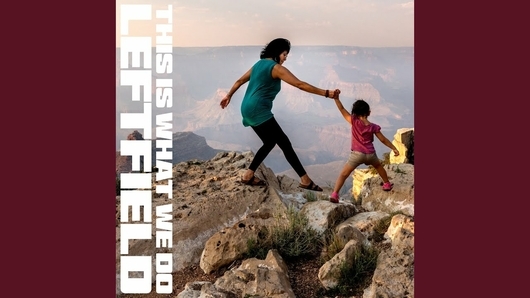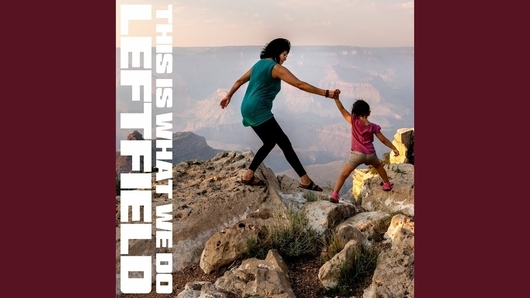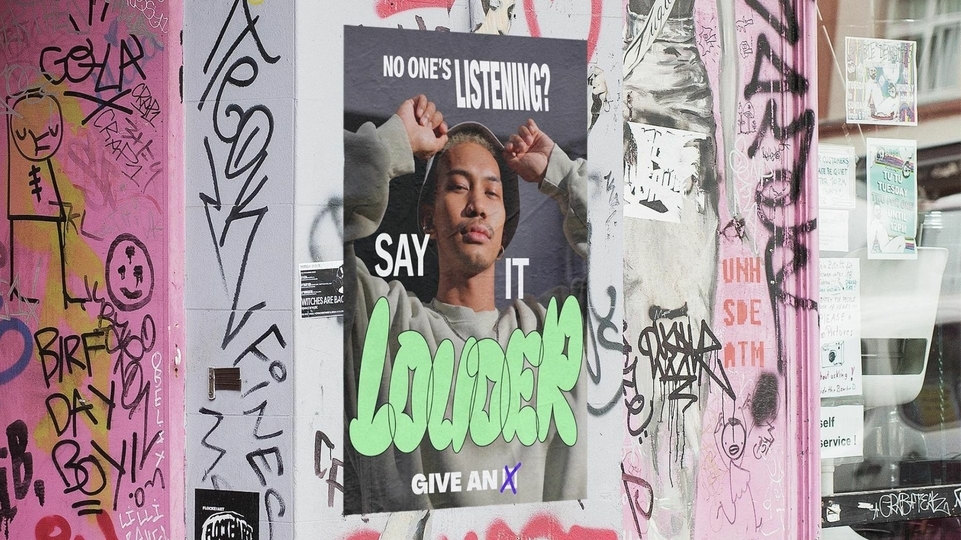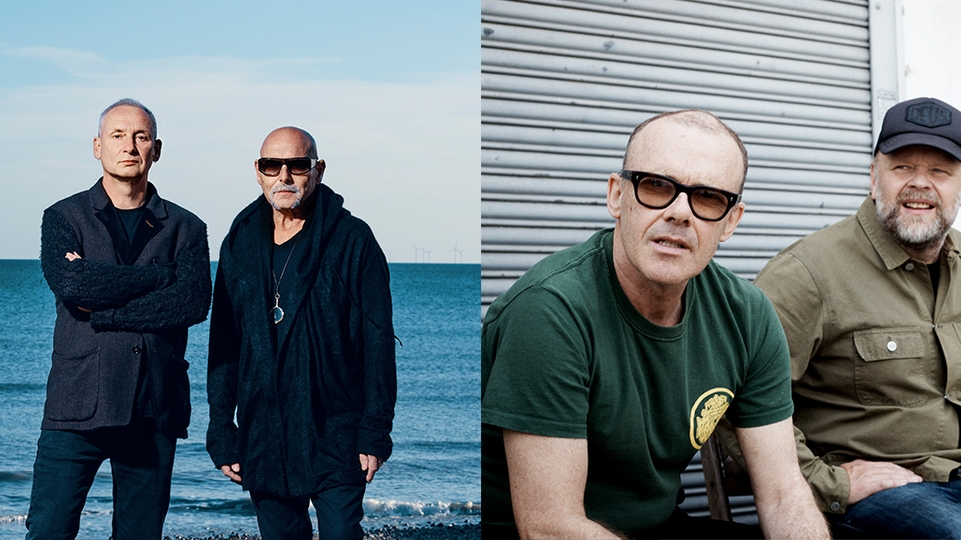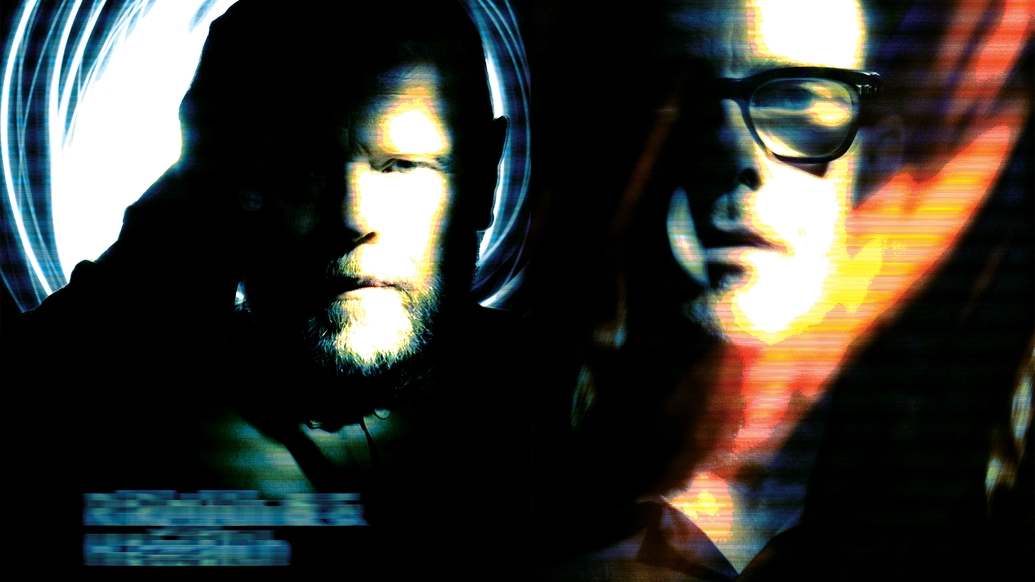
Leftfield: rhythm & health
After confronting cancer, and embarking on a journey of self-discovery via therapy, Neil Barnes is back with a weighty and assured new Leftfield album. Joe Roberts meets him to talk about active listening, lazy stereotyping, and how music should have a “fuck-off quality”
‘Open Up’, a voice in our head is urging us to joke as Leftfield founder member Neil Barnes comes to the door of his West London studio. Meant as a nervous icebreaker, it sinks, instead, back into the depths of our subconscious. But its brief emergence gives a glimpse of the vast, submerged cultural influence Leftfield hold over electronic music’s first generations.
As Leftfield v1, the original studio pairing of Neil and partner Paul Daley had an alchemical touch. ‘Leftism’, their 1995 debut album, arrived with such an impact it transcended electronic music. It was aided by various guest turns, including from ex-Sex Pistol turned PiL post-punker John Lydon, who fronted ‘93 single ‘Open Up’, and Toni Halliday, lead singer of alt-rock band Curve, who appeared on its follow-up, ‘Original’. The duo’s blend of house, dub, breakbeats and African percussion has been credited as creating the template for progressive house, while their live shows became known for their ear-splitting volumes, quite literally bringing the house down — as during their 1996 debut tour when the bar of Dutch club Paradiso vibrated so much it fell off the wall.
It took five years to release their follow-up, 1999’s ‘Rhythm And Stealth’, but it arguably had an even bigger impact, lead single ‘Phat Planet’ finding national fame thanks to soundtracking a Guinness advert whose arty edge complemented its tectonic-plate-shaking bassline. Then in 2002, they split. What you might call Leftfield v2 (re) launched in 2010. Beginning as a live act, and led by Barnes with no Daley, it still featured members of the band’s original wider cast: Adam Wren, Leftfield’s studio engineer; MC Cheshire Cat; Earl Sixteen, the Jamaican reggae singer whose distinctive voice fronted ‘92 single ‘Release The Pressure’; and Djum Djum, aka Neil Cole.
Last month month heralds the release of ‘This Is What We Do’, the second album from the dynamic of Barnes and Wren, following 2015’s ‘Alternative Light Source’. It arrives out of turbulence both global — with the grinding-to-a-halt shutdown of Covid — and personal, Neil undergoing surgery last year for bowel cancer. Alongside this, during lockdown he began training as a counsellor, which helped delve back into childhood trauma. In short, a lot has happened.
“That brings back memories,” says Neil, now 62, as he spies our Outer Rhythm T-shirt. The Sheffield label put out Leftfield’s debut, ‘Not Forgotten’, as well as its follow-up, ‘More Than I Know’, whose B-side featured Daley’s remix of ‘Not Forgotten’, a hit with DJs from Sasha to Weatherall. “I found the original version of ‘Not Forgotten’ on a cassette,” he adds, as he sits on a sofa outside the studio where Adam is currently working on the live set-up, occasionally popping through and chiming in. It was a debut, he explains, that almost didn’t happen.
Linked to the label by Djum Djum, Barnes says he was uncharacteristically bold when they asked him to send it in, refusing. “So I took it in and I played it to them. They said, it’s not quite what we want. Then I got a phone call saying, ‘We’ve played it again and we really want to release it’.” There was more nervous newness, it seems, to releasing ‘Alternative Light Source’. The first record without Paul, a sonic shift was apparent, and Neil wondered whether Leftfield still had any legs, while also wrestling over whether he had ownership of the name. “I think it wasn’t as good as it could have been,” he says on reflection, mentioning the mixing as something they could have spent more time on. Yet tracks such as ‘Storms End’ remain proud moments and the album continued to evolve as they hit the road, with arrangements adjusted and sounds tweaked. “When you tour, you get a chance to rework it and make things better, and certainly more applicable to a live audience,” chips in Adam, who Neil tells us was a “major part” of the new release.

“I don’t think anything’s ever as good in a weird way as your first few records. It’s what Bowie always used to say. It didn’t matter what he did, people always wanted him to go back to ‘Hunky Dory’, what they saw as great Bowie."
There were also, of course, people knocking Leftfield for not being what they were. “I don’t think anything’s ever as good in a weird way as your first few records,” says Neil plainly, leading us to quote the old music industry adage: you’ve got all your life to write your first record, then six months to write your second. Though Leftfield definitely set their own time-frames for follow-ups, both as v1 and v2, that sense of being a blank canvas certainly never returns. “It’s what Bowie always used to say,” Neil agrees. “It didn’t matter what he did, people always wanted him to go back to ‘Hunky Dory’, what they saw as great Bowie. As a performer, that’s so painful. Always being taken back to your first work is not healthy.” As a fan, however, he gets it, admitting his favourite music to listen to is reggae from 1974 to 1977.
It’s hard not making comparisons though, especially for acts who’ve been so defining. Listening to the new album ‘This Is What We Do’, the phrase “really ‘Phat Planet’” springs to mind. It’s huge and expansive sonically, but also in terms of difference and familiarity. First single ‘Pulse’ recalls Hard Hands’s penchant for breaks, a rasping lead and gated trancey vocals giving it a heady dry ice and amyl swirl. Second release ‘Accumulator’ is techno for big rooms, like a sensory memory of Bugged Out! with Daft Punk in one room and Green Velvet in the other. And ‘Full Way Round’ continues Leftfield’s knack of getting show-stopping turns from their guests, Fontaines DC’s ever-articulate singer Grian Chatten wowing with a poetic back-of-a-taxi rant about being pulled between carnal desire and religious guilt.
It’s packed with distinctive, weighty moments — bolstered by further guest turns from poet Lemn Sissay (who featured on ‘Leftism’’s ‘21st Century Poem’) on the darkly hopeful ‘Making A Difference’ and mainstay Earl 16, who celebrates the redemptive power of dancing to music on ‘Rapture 16’. There’s a sense of getting back to being part of music’s power to move in the album’s title, and its creation provided a focus for Neil during challenging times of his own.
When Covid hit, the record was half finished. A past brush with skin cancer meant he was classed as vulnerable, so he and Adam were unable to spend time in the studio, which is in a shared complex: “I found it a very uninspiring time.” Having previously been DJing across Europe, name-checking favourite parties such as Glasgow’s Club 69 and I Love Acid, listening to electronic music no longer made sense, leading him to switch his attention elsewhere. Musically, this led to jazz and ambient. But searching for a wider sense of purpose, he began training as a counsellor.
After being in and out of therapy for years, his main motivation was a journey of self-discovery. “I wasn’t thinking that I’d ever make it as a therapist or even as a counsellor,” he says, having since deferred his training to concentrate again on Leftfield. “I was more interested in the opportunity to read and to work with people who were interested in it.”
It proved gruelling, he says, involving deep self-examination and group work. But it fired his creativity, which extended to the studio when he and Adam were able to return. “People bring in fucked up shit and it’s quite difficult,” he says of his experience of the training at one level. “But generally speaking, you’re making new thought patterns and discovering new things about yourself. That I think helps the artistic process.”
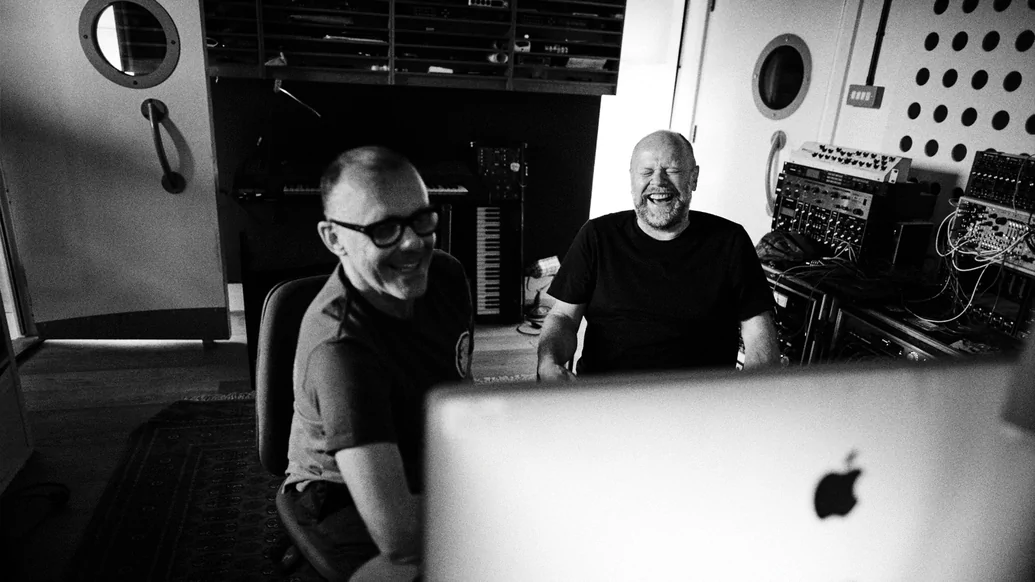
He doesn’t agree with Bowie then, that an artist shouldn’t have therapy, in case that interferes with what’s driving them? “That’s someone that just really didn’t know anything about therapy,” he counters. “And actually, that’s very typically ’70s, that whole idea that if you have a photograph taken of you, it takes your soul. Maybe what he’s saying is that if he was a happier person, he’d never have made ‘Lodger’. That whole Berlin phase, he was an unhappy man. He went on his own self-exploration.”
A lot of musicians, he notes, are plagued by depression, pointing us to the book Can Music Make You Sick? by his friend Sally Gross. Gross proposes that whilst making music is therapeutic, making a career from music can be traumatic, something that chimes with the experience of the growing number of DJs and producers opening up about their burnout on social media. There’s the euphoria of on-stage adulation, Neil says, then returning home to practicalities, such as parental responsibility. In 2011, while playing Budapest, Neil had an “out-of-body experience” on stage. “I felt strange, God-like powers and in those moments, you can do anything, it’s quite dangerous.” He realised he was not well, he says, but many others cope via drugs, pointing out it’s what Nick Cave attributes musicians’ widespread use of heroin to in his recent book, Faith, Hope And Carnage.
“I do agree with Bowie about being out of your depth,” he says, though, on the need to creatively go beyond what you’re comfortable with. Modern music, he believes, especially dance music, is plagued by a lack of risk and everyone having the same gear. Streaming platforms, such as Spotify, have led to a culture of just “pumping out shit”. Music, he goes on, should have a “fuck-off quality”.
“My new record is probably just the same as everything I’ve done before,” he checks quickly, to head off potential critics. “You can’t help but replicate yourself. But hopefully it’s just enough of a shift one way to make it different.”
With commercial demands coming from every direction, he also has great sympathy for young musicians starting out. New EU restrictions, such as the need for a carnet, have made touring live hugely more expensive for Leftfield, let alone anyone starting out, and Neil reckons these days everyone needs more than one string to their bow, his own aspirations beginning to look towards soundtracks and sync: “The recording world is so precarious.”
Working with Grian in the studio brought the kind of provocative, thoughtful spirit he seems to be yearning for. “Most people I’ve contacted to do vocals for tracks don’t want to know,” Neil says, surprising us with what we thought would be a formality. “It’s probably because it’s working with an old geezer. Who wants to do that?” Already a big fan of Fontaines DC, who he labels “fellow travellers”, having seen them live a couple of times, it was his daughter, musician Georgia Barnes, who introduced him to Grian. He describes the Irish singer as “fucking brilliant”, and their three days writing in the studio together, then Grian’s subsequent one-take performance, proved “mind blowing”. Just don’t say the result sounds like Underworld. “That’s ignorant, isn’t it?” fumes Neil, possibly having heard it more than once from record execs, “That anything you put an indie vocal on sounds like Underworld?”
The same lazy stereotyping, he says, doesn’t follow “the endless folk rock fucking tracks we have to listen to, following the millions of vocalists who did the same thing in the 1960s”. ‘Full Way Round’, everyone does agree, is “a really special bit of music, it takes you over. I’m pleased with it, and I’m not often pleased with things.” A better comparison is possibly Orbital’s recent team up with Sleaford Mods, both pairings combining uncompromising sonics and a politically-charged message with choruses as hooky as anything on Radio 1.
His own hunch about musicians and mental health is: “I suspect it’s early stuff”. Becoming fascinated by the work of John Bowlby, whose research in child development led to his pioneering attachment theory, Neil’s study allowed him to further explore a case of abuse that happened in his own childhood. A trauma that had reared its head at various points in his life, when he discussed it in a “healthy, supportive environment”, he could remember every detail. Praising Bessel van der Kolk’s book, The Body Keeps The Score, for opening up conversations about trauma and its effects, he’s also undergone the “amazing” experience of EMDR, a therapy that specifically helps process such experiences.
If Covid curtailed the album, it was cancer that pushed him to complete it. Diagnosed with bowel cancer in 2020 after a hunch that something was wrong, Neil eventually had seven inches of colon removed. But in the period before his operation, finishing the album demos became all-important.
“I had a meeting with the label the day before I went in to have the operation,” he says, recalling the music wasn’t in the greatest state, but the spark was there. “I went a bit mental,” he admits, explaining he couldn’t take onboard what was happening. It was only when he’d got the all-clear, he says, that it hit him and he got badly depressed.
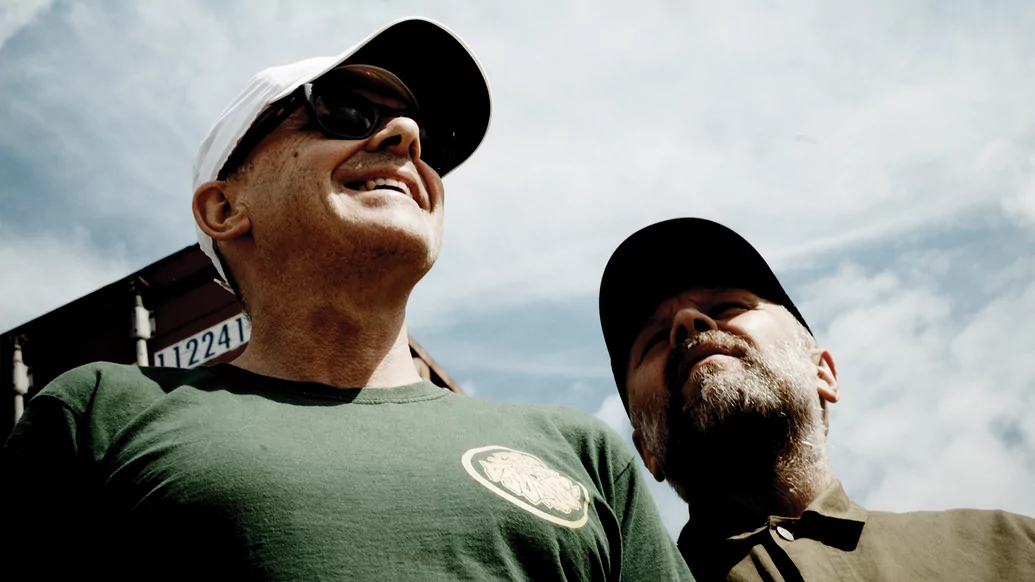
“In a weird way, the album is a play on that. Listen properly to the music. Take it in before you tell me what it sounds like. If you really listen, maybe you might hear something."
A member of acid house’s founding generation, now all well into middle age and beyond, the balance between work and physical health has become something to consider. Staying up all-night DJing, he ruefully opines, is probably in the past, although he doesn’t sound certain. “All that standing up for hours, it’s not very good for you unless you’re young,” he says, referencing the sad, widely-mourned passing of Andrew Weatherall.
This sense of mortality, of a finite time left, seems to have given Neil, and the music of ‘This Is What We Do’, a sense of self-assurance. For the cover art, various designers suggested representing the title with “images of blokes doing quite athletic things”. Neil, however, chose a photo by American photographer Steve McCurry instead. Best known for his 1985 photo Afghan Girl, which appeared on the cover of National Geographic, it captured the steely youthful defiance of Sharbat Gula, a girl who was in a refugee camp on the border of Afghanistan and Pakistan.
If Afghan Girl has even more resonance today, then the image on ‘This Is What We Do’ hints at displacement again, a small girl leading her young mother across a gap in a rocky landscape. Although Neil doesn’t want to reveal exactly who they are, so we can read into it what we will, he says it was important to him that it’s two women and that it’s the daughter leading the way. “Often children look after us,” he says. However you take it, it speaks of the human spirit, two tiny figures forging a bond as they make their way through a vast and barren landscape. Intentional or not, it also has shades of the process of therapy itself: an adult client responding to the needs of their inner child, a therapist following the client’s early woundings to a place of liberation.
Elsewhere on the album, Neil’s therapeutic journey is integrated more explicitly. On final track ‘The Power Of Listening’, there’s a brief sample of Carl Rogers, the man who founded person-centred counselling. Quietly proclaiming “The power of an empathic way of being”, it’s woven into what Neil describes as “a European techno track, what I might have played in summer in Sweden or Norway”. As a proponent of active listening — that is, really engaging with facts and feelings being offered to fully understand another — Rogers’ techniques were adopted, says Neil, when there were peace talks between Catholics and Protestants in Ireland. It’s this, he says, that’s the crux of the album, revealing something about his own current take on the world.
“In a weird way, the album is a play on that. Listen properly to the music. Take it in before you tell me what it sounds like. If you really listen, maybe you might hear something. And taking that further, really listen to what people say, rather than tell them what they should be thinking. Especially young people. Listen to what they say, because they have a viewpoint on things. That’s really what he’s saying.”
If this contains the hope that ‘This Is What We Do’ will be taken on its own terms, as its own creation that speaks of its own times, then Neil is aware there will always be those who’d like to see him and Paul working together again. “I haven’t talked to Paul for years,” he says sadly, a wall of silence contrasting what we’ve just been discussing. Their relationship, as he outlines it, gelled because of a melding of opposites, Neil’s introspection complementing Paul’s outgoingness. It was, he says, like many creative partnerships, akin to a marriage.
“When that breaks down, love turns to hate very quickly.” There appears to be pain around it. “We were very close. Then... we weren’t.” Despite this distance, he says there’s no antipathy, paying tribute to Paul’s “massive, massive role” in creating ‘Leftism’ and ‘Rhythm And Stealth’, even more so the latter, because Neil’s father had just died and he wasn’t in a good place.
It sounds final. But there’s a counselling process called Interpersonal Process Recall where sessions are revisited in an attempt to discover material missed the first time around. Listening back to our interview, we can’t help but wonder: is all this talk of listening and really understanding also a deep desire for reconciliation? Or is it Neil hearing his own inner voice and coming to accept Leftfield on its new terms? There’s definitely less doubt this time. “I love the album,” he says proudly of what he and Adam have achieved. “I don’t know what people are going to say, but as far as I’m concerned, I really like it.” There may never be another, he adds. “This one nearly killed me.”
It’s being brought to life at four sold-out gigs, the precursor to a wider tour. These will feature all-new material from the album, although there may be some classics saved “for the encore, if we have one,” Neil says self- deprecatingly. If you’re worried about their live show losing its edge, fear not. While the excessive decibels of old were down to discovering their sound system engineer was deaf, Leftfield still deliver the bass.
“I don’t think it’s damaging, unless you go really low,” Neil says, before adding disconcertingly, “at which point it can kill you. But around 40hz, it’s wicked, it just massages your insides.” Trust them. This is what they do.


